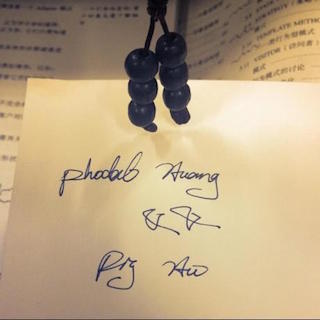IoT CoAP 添加REST支持
在完成第一阶段的CoAP功能之后,顺手把RESTful的HTTP版也添加了进去。
CoAP REST 使用
创建一个简单的index.js
const iotcoap = require('iot-coap');
iotcoap.run();
iotcoap.rest.run(); //运行REST这样我们就可以在不破坏原来功能的基本上添加新的特性了。只是我们还需要修改数据的配置
{
"db_name": "iot.db",
"table_name": "basic",
"key":[
"id",
"value",
"sensors1",
"sensors2"
],
"db_table": "id integer primary key, value text, sensors1 float, sensors2 float",
"init_table":[
"insert or replace into basic (id,value,sensors1,sensors2) VALUES (1, 'is id 1', 19, 20);",
"insert or replace into basic (id,value,sensors1,sensors2) VALUES (2, 'is id 2', 20, 21);"
],
"query_table":"select * from basic;",
"rest_url": "/id/:id",
"rest_post_url": "/",
"rest_port": 8848
}添加了REST的端口配置,以及URL。
CoAP REST 创建
有一个大前提是这里共用的是同一个数据库,自然而然的我们也可以用同一个db_helper。修改index.js
添加rest
为了变成一个NodeJS的包提供给外部的函数使用,我们需要将其exports出去,于是修改index.js,添加下面的内容:
const rest = require('./server/rest');
module.exports.rest = rest;创建REST
代码如下所示,我们所做的便是创建一个RESTify 的基本资源管理
restserver.use(restify.gzipResponse());
restserver.use(restify.bodyParser());
restserver .use(restify.acceptParser(['json', 'application/json']));
restserver.get(config["rest_url"], rest_helper.get_respond);
restserver.put(config["rest_post_url"], rest_helper.post_respond);
restserver.del(config["rest_url"], rest_helper.del_respond);
restserver.post(config["rest_post_url"], rest_helper.post_respond);
restserver.head(config["rest_url"], rest_helper.respond);
restserver.listen(config["rest_port"], function() {
console.log('%s listening at %s', restserver.name, restserver.url);
});详细代码可见
[https://github.com/gmszone/iot-coap](https://github.com/gmszone/iot-coap)REST GET/DELETE
再exports出这个rest,而rest_helper所做的便是一个与数据库的兼容。
rest_helper.respond = function(req, res, next) {
restdb_helper.urlQueryData(req.url, function(e){
res.send(JSON.parse(e));
next();
})
};看看在query_helper.js中写的
query_helper.syncJSON = function(req, res, block) {
DBHelper.syncData(block, function (result) {
returnResult.saveAndCode(block, res);
});
};两个看上去差不多,于是我们算是做了一个好的示例。而其他的大致也是类似的
rest_helper.get_respond = function (req, res, next) {
restdb_helper.urlQueryData(req.url, function(e){
res.send(JSON.parse(e));
next();
})
};
rest_helper.del_respond = function (req, res, next) {
restdb_helper.urlQueryData(req.url, function(e){
res.send(JSON.parse(e));
next();
})
};REST POST
除了里面的post_respond,因为CoAP用的是Buffer来发送数据的,而REST则用的JSON,于是我们需要将数据格式转换为简单的格式传递进去。
rest_helper.post_respond = function (req, res, next) {
var data=[];
_.each((req.params), function(key,value){
if(typeof key === "string"){
key = "'" + key + "'";
}
data.push(key);
});
restdb_helper.syncData(data, function(e){
res.send({});
next();
})
};这里的做法与CoAP与数据之间的做法是一致的,POST和PUT用的是一样的写法。
或许您还需要下面的文章:
围观我的Github Idea墙, 也许,你会遇到心仪的项目
comment
- 2025 年 AI 编程趋势:智能体 10 倍生产率放大下的“粪围”蔓延
- 2025 年 AI 驱动开发中的生产力与风险:10 倍悖论
- AutoDev Remote 编程智能体:你何必只让 AI 在白天分析需求、设计方案
- AutoDev 预上下文引擎:预生成代码语义化信息,构建 AI 编程的知识基座
- 两周 3 万行代码!我们的 7 个 AI “粪堆”求生编程实践
- AutoDev 智能开发驾驶舱|上下文驱动的 AI 编程开发者平台
- 预生成上下文:重构 RAG 的关键工程能力,构建企业级 AI 编程底座
- 预上下文生成:提升生成式 AI 代码生成效率的关键
- AI 友好架构:DevOps 平台 & 平台工程赋能 AI 自动编程
- AI 驱动的知识导航:通过平台工程提升开发者生产力
- opensuse (10)
- django (41)
- arduino (10)
- thoughtworks (18)
- centos (9)
- nginx (18)
- java (10)
- SEO (9)
- iot (47)
- iot system (12)
- RESTful (23)
- refactor (17)
- python (47)
- mezzanine (15)
- test (11)
- design (16)
- linux (14)
- tdd (12)
- ruby (14)
- github (24)
- git (10)
- javascript (52)
- android (36)
- jquery (18)
- rework (13)
- markdown (10)
- nodejs (24)
- google (8)
- code (9)
- macos (9)
- node (11)
- think (8)
- beageek (8)
- underscore (14)
- ux (8)
- microservices (10)
- rethink (9)
- architecture (37)
- backbone (19)
- mustache (9)
- requirejs (11)
- CoAP (21)
- aws (10)
- dsl (9)
- ionic (25)
- Cordova (21)
- angular (16)
- react (14)
- ddd (9)
- summary (9)
- growth (10)
- frontend (14)
- react native (8)
- serverless (32)
- rust (9)
- llm (8)

